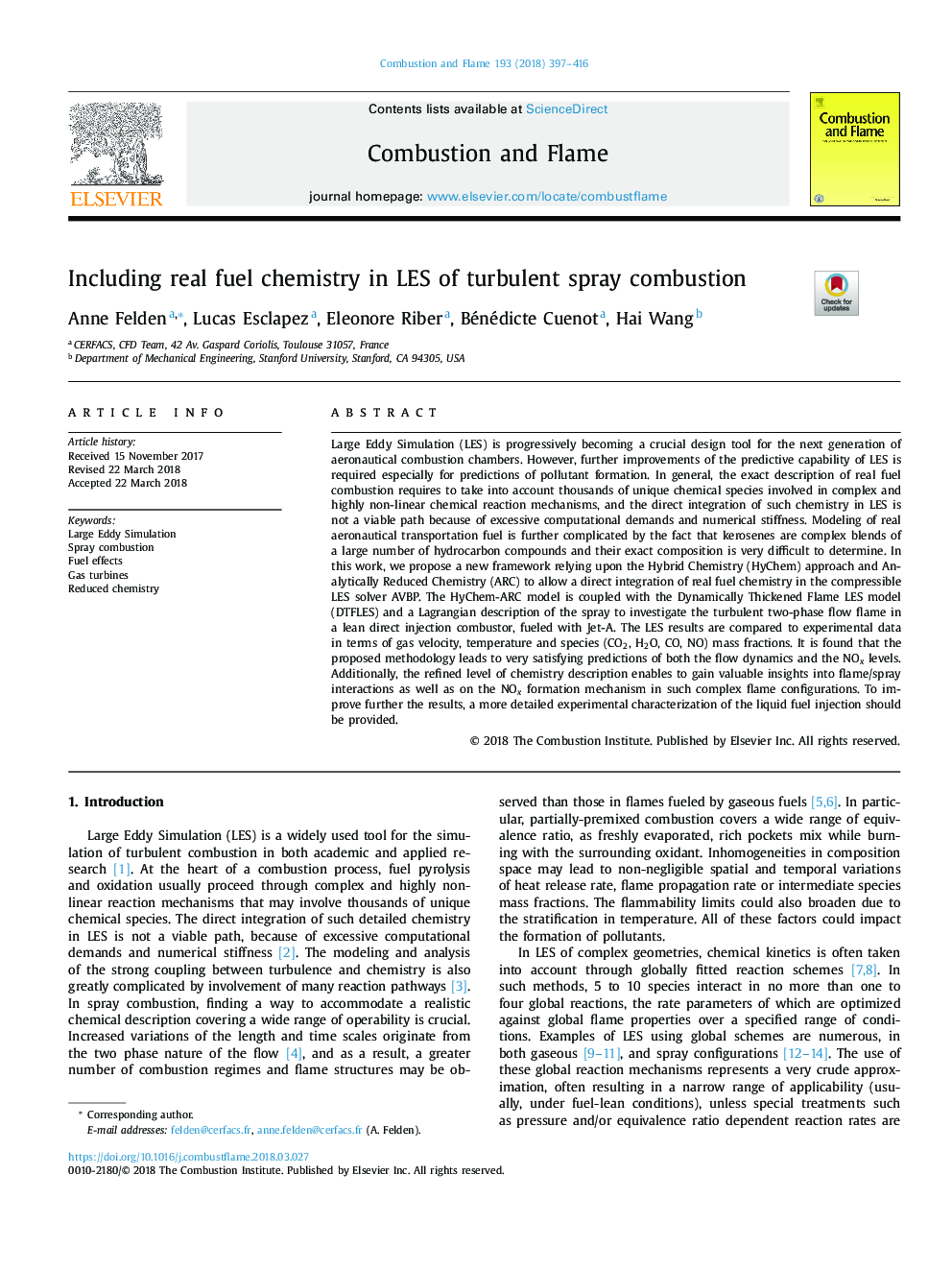| Article ID | Journal | Published Year | Pages | File Type |
|---|---|---|---|---|
| 6593600 | Combustion and Flame | 2018 | 20 Pages |
Abstract
Large Eddy Simulation (LES) is progressively becoming a crucial design tool for the next generation of aeronautical combustion chambers. However, further improvements of the predictive capability of LES is required especially for predictions of pollutant formation. In general, the exact description of real fuel combustion requires to take into account thousands of unique chemical species involved in complex and highly non-linear chemical reaction mechanisms, and the direct integration of such chemistry in LES is not a viable path because of excessive computational demands and numerical stiffness. Modeling of real aeronautical transportation fuel is further complicated by the fact that kerosenes are complex blends of a large number of hydrocarbon compounds and their exact composition is very difficult to determine. In this work, we propose a new framework relying upon the Hybrid Chemistry (HyChem) approach and Analytically Reduced Chemistry (ARC) to allow a direct integration of real fuel chemistry in the compressible LES solver AVBP. The HyChem-ARC model is coupled with the Dynamically Thickened Flame LES model (DTFLES) and a Lagrangian description of the spray to investigate the turbulent two-phase flow flame in a lean direct injection combustor, fueled with Jet-A. The LES results are compared to experimental data in terms of gas velocity, temperature and species (CO2, H2O, CO, NO) mass fractions. It is found that the proposed methodology leads to very satisfying predictions of both the flow dynamics and the NOx levels. Additionally, the refined level of chemistry description enables to gain valuable insights into flame/spray interactions as well as on the NOx formation mechanism in such complex flame configurations. To improve further the results, a more detailed experimental characterization of the liquid fuel injection should be provided.
Related Topics
Physical Sciences and Engineering
Chemical Engineering
Chemical Engineering (General)
Authors
Anne Felden, Lucas Esclapez, Eleonore Riber, Bénédicte Cuenot, Hai Wang,
